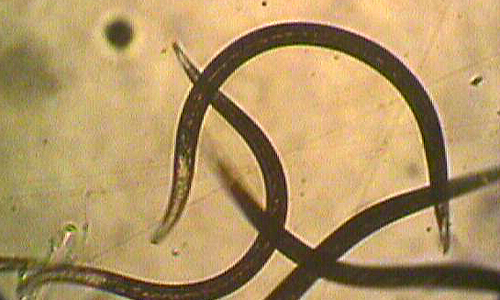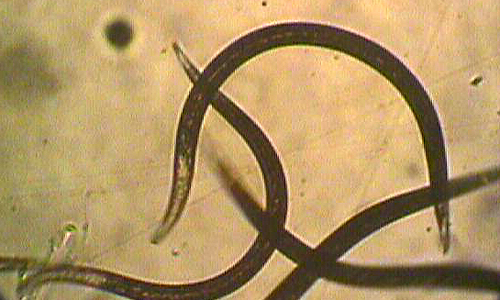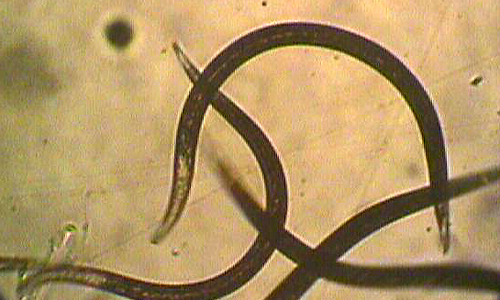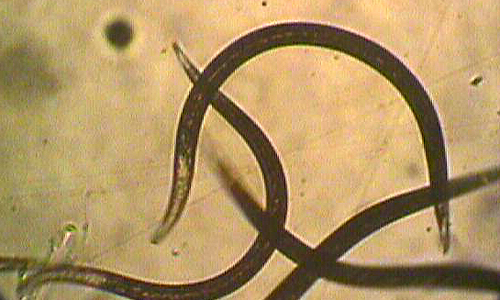Japanese beetles
Importance of Japanese beetles
Japanese beetles (Popillia japonica) are native to Japan but they are widely distributed throughout the United States and considered as one of the most damaging insect pests of many agricultural and horticultural crops, ornamental plants and various turfgrass species. Larvae of Japanese beetles mainly damage roots but their adults cause damage to aboveground plant parts including flowers, young fruits, leaves and twigs.
Facts (show all)
- Taxonomy and list of the most economically devastating species of Japanese beetles
-
- Common name: Japanese beetles. It was named as “Japanese beetles” because it is native to Japan.
- Scientific name: Popillia japonica
- Kingdom: Animalia
- Phylum: Arthropoda
- Class: Insecta
- Order: Coleoptera
- Suborder: Polyphaga
- Family: Scarabaeidae
- Subfamily: Rutelinae
- Genus: Popillia
- Species: japonica
- Identification of Japanese beetles
-
Adults: Japanese beetle adults are shiny metallic-green in color, oval shaped and about 1.5 inch long.
Eggs: Eggs of Japanese beetles are white and oval shaped
Larvae/grubs: Larvae (also called grubs) are whitish in color with yellowish-brown head capsule and three pairs of thoracic legs. Japanese beetle grubs generally form C- shape when they are disturbed
Pupae: Pale creamy to greenish in color.
- Biology of Japanese beetles
-
Japanese beetles usually take about one year to complete their egg-to-egg life cycle. Briefly, life cycle begins when Japanese beetle adults emerge from pupae in the late June through July and start feeding on leaves, flowers and fruits of different plants. While feeding, females lay eggs about 1-2 inches deep in the soil near to the grass roots. The eggs hatch within 2 weeks (i.e. early in August). Newly hatched first instar grubs immediately start feeding on grass roots and develop into second and third instars from August through October. When temperature starts cooling down during September through October, third instar grubs start moving deep into soil for overwintering. Then when weather starts warming up early in the April, overwintering grubs will move back into the turf root-zone where they continue feeding on turf roots again until they develop into mature grubs. These matured grubs will then pupate in the soil early in the June and emerge as adults late in the June. Emerged adults will mate, lay eggs and life cycle continues.
- What type of damage is caused by Japanese beetles?
-
Both larvae (grubs) and adults of Japanese beetles cause a serious damage to many plant species. Japanese beetle grubs generally feed on the roots of turf grass and different ornamental plants whereas adults feed on aboveground plant parts including leaves, flowers and fruits. The damage caused by Japanese beetle grubs to turf grass can be easily recognized, as their early feeding causes localized patches of dead turf grass in the yards and golf course greens. As the feeding activity of grubs on turf roots progresses, small patches of dead turf enlarges and joins together to form the large areas of dead turf. These dead patches of grass are always confused with the symptoms of water stress. This dead turf is loose and easily picked up with hand like a piece of carpet. The most important sign of presence of Japanese beetle grubs in the lawn is that the infested areas of lawn is destroyed by small animals like raccoons and skunks or by birds that are looking for grubs to feed on them.
The adult Japanese beetles cause a severe damage to leaves, flowers and fruits of different plant species. These beetles can completely skeletonize all the leaves and eventually defoliate the whole plants.
- Biological control of Colorado potato beetle
-
Beneficial entomopathogenic nematodes including Heterorhabditis bacteriophora Heterorhabditis indica and Steinernema carpocapsae are currently used as the safe alternatives to chemical pesticides in managing Japanese beetles that infest turfgrasses as well as many agricultural, horticultural and ornamental plants. For effective control of Japanese beetle grubs and pupae, these beneficial entomopathogenic nematodes can be applied at the rate 23000 nematodes per square foot area in the soil using water cans or traditional knapsack sprayers.
When the beneficial entomopathogenic nematodes are applied to the soil surface or thatch layer, they will move in the soil and seek Japanese beetle grubs and pupae. Once nematodes find a grub or pupa, they will enter into the grub’s body cavity via natural openings such as mouth, anus and spiracles and release symbiotic bacteria from their gut in blood. Nematodes use these symbiotic bacteria as weapon to Japanese beetle grubs and pupae. Once in the grub’s blood, bacteria will multiply rapidly and cause septicemia killing Japanese beetle grubs or pupae usually within 48 h after infection. Inside the grub cadaver, nematodes mainly feed on multiplying bacteria, mature into adults, reproduce and then emerge as infective juveniles from the cadaver to seek new Japanese beetle grubs, pupae or other insect hosts that may be present in the soil.
- Beneficial entomopathogenic nematodes that are effective against Japanese beetles
-
- Heterorhabditis bacteriophora
- Steinernema carpocapsae
- Heterorhabditis indica
- Research Papers
-
Grewal, P.S., Koppenhofer, A.M., and Choo, H.Y., 2005. Lawn, turfgrass and Pasture applications. In: Nematodes As Biocontrol Agents. Grewal, P.S. Ehlers, R.-U., Shapiro-Ilan, D. (eds.). CAB publishing, CAB International, Oxon. Pp 147-166.
Koppenhofer, A.M., Fuzy, E.M., Crocker, R.L., Gelernter, W.D. and Polavarapu, S. 2004. Pathogenicity of Heterorhabditis bacteriophora, Steinernema glaseri, and S. scarabaei (Rhabditida : Heterorhabditidae, Steinernematidae) against 12 white grub species (Coleoptera : Scarabaeidae). Biocontrol Science and Technology. 14: 87-92.







